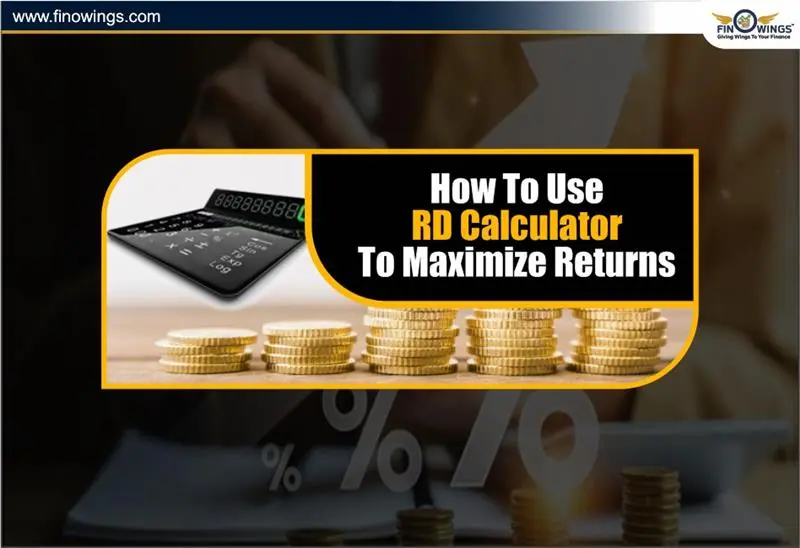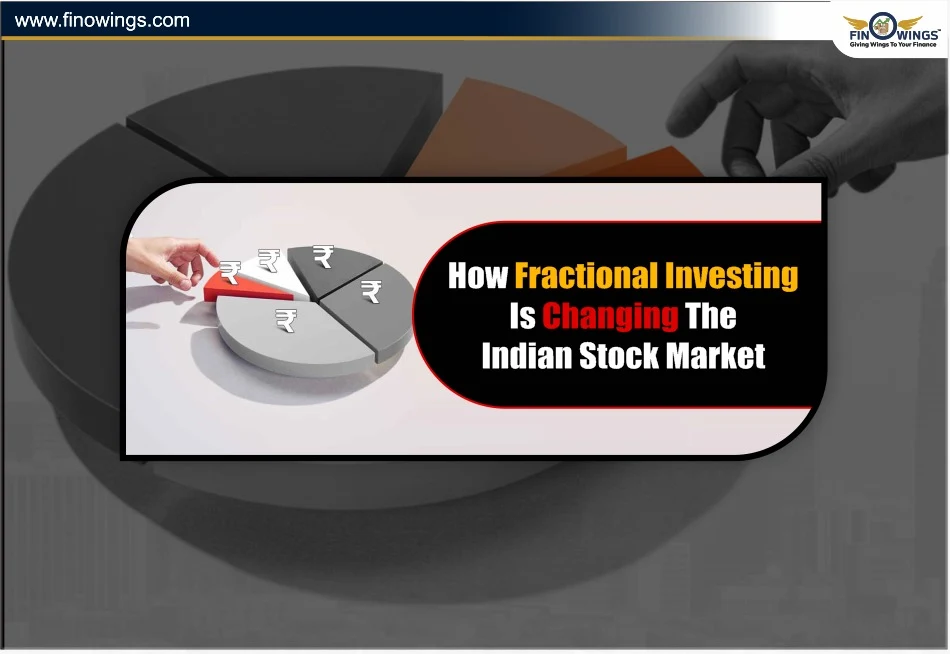Home >> Blog >> How to Use RD Calculator to Maximize Returns
How to Use RD Calculator to Maximize Returns

Table of Contents
Introduction
Many Indians prefer Recurring Deposits (RDs) because it is a safe and disciplined way to save money each month, and they earn guaranteed returns.
However, what most investors don’t realise is that the way you plan and calculate your RD investment can bring a huge difference in your maturity amount.
This is where the RD calculator is useful. If you are looking at the interest rates, banks, or comparing different tenures, an RD interest calculator can help you understand and estimate how much return you will earn and help you maximise your RD calculator value.
This guide explains the following points:
The functioning and definition of an RD Calculator
How you can use an RD Calculator efficiently
The distinction between RD interest, maturity, and return calculators
Practical strategies to maximise your RD returns
What is a Recurring Deposit (RD)?
Recurring Deposit (RD) accounts can be opened at banks and post offices in India. It is a type of RD where customers are required to make a deposit of a certain sum of money every month (currently, the minimum is Rs. 500) for a fixed duration of time and is available in periods of 6 months, 1 year, 2 years, 5 years, and 10 years (up to 10 years is the maximum duration).
At the end of the duration, you will receive:
1. the total amount you deposited, and
2. the interest you will earn (compounded quarterly or monthly)
Due to the nature of the returns and the type of investments involved, investments in RDs are preferred by people looking for risk-free returns and are also conservative in nature.
Example of Recurring Deposit India:
If you invest Rs. 5,000 every month for 5 years at an interest rate of 7% per annum, your total investments will be Rs. 3,00,000 (use RD maturity calculator in this case). The maturity amount at the end of the period will be approximately Rs. 3,51,000. This translates into an interest of Rs. 51,000.
What is an RD Calculator?
An RD Calculator (Recurring Deposit Calculator) is an online financial tool that will assist you before initiating an RD in determining your maturity amount, total investment, and interest earned.
Eliminating all complex calculations and guesswork, it provides you instant value.
You will easily come across several free options, including:
Bank sites (SBI, HDFC, ICICI, etc.)
Online financial services like Groww, BankBazaar, or Policybazaar
The RD calculator sections of the Government banks in India
How an RD Calculator Works
An RD interest calculator calculates your returns based on:
1. Monthly Deposit Amount
2. Interest Rate (per annum)
3. Tenure (in months or years)
4. Compounding frequency, usually quarterly in India
Formula Used:
Where:
M = Maturity amount
P = Monthly deposit
r = Annual interest rate (in decimal)
n = Number of compounding quarters (usually 4)
t = Tenure in years
This formula will show you how your monthly contributions grow with compounding interest over time.
Different Types of RD Calculators Available
There are three common types, even though most websites combine all functions into one:
All three - RD interest calculator, RD maturity calculator, and RD return calculator - function under the same principle but meet the different needs of the end-users.
Simple Guide to Using an RD Calculator India
Smart usage of an RD calculator involves the following simple steps:
Step 1: Enter Your Monthly Deposit
Find the amount you will set aside every month, like Rs. 2000, Rs. 5000, or Rs. 10000 will work.
This will be your base input for the calculator.
Step 2: Choose the Interest Rate
RD interest rates from different banks range from 6.5% to 8% per annum.
Choose the rate based on your bank or NBFC of choice.
Step 3: Select the Tenure
Choose how long you want to invest. 6 months to 10 years is the standard.
Compounding will increase your money, so the longer you invest, the more you will make in the end.
Step 4: View Your Result
After you click "Calculate," you will see how much total investment, how much interest earned, and how much total amount at maturity.
Example:
If you invest Rs. 5,000 every month for 5 years at 7% interest per annum, this will help you see and compare the returns you will get from different banks and pick the best plan.
How to Use the RD Calculator to Maximise Returns
An RD calculator in India doesn't just calculate returns; it helps you plan your next steps more efficiently.
Here's how to make the most of it:
1. Compare Different Banks
You can use the RD maturity calculator to review different banks' RD offers.
Take, for example, HDFC at 7% and SBI at 6.7%. Then you see how much maturity you get at 7% compared to 6.7%. You will see that having a 0.3% change will make a big difference over the years.
2. Choose Longer Tenure for Compounding Benefits
For RDs, interest is compounded every 3 months. This means the longer you stay, the more interest you earn.
To see the difference over time, use the RD return calculator to compare 3 years to 5 years.
3. Reinvest Your RD Upon Maturity
After your RD matures, consider reinvesting it into another RD or a Fixed Deposit at a higher rate instead of just withdrawing it.
With an RD interest calculator, you can easily see how much you will make by reinvesting for another term.
4. Plan Your RD Tenure Around Goals
Align your RDs to your particular goals, such as a child's education, a vehicle, or a planned expense for a festival.
Use an RD maturity calculator, enter your target amount, and then figure out how much you need to invest monthly.
Example:
If you need Rs. 5 lakh in 5 years, the calculator shows you need to invest approximately Rs. 7,100 monthly at 7% interest.
5. Do Not Withdraw Early
If you break your RD early, you will suffer a significant loss of interest. Set the right tenure when using the RD calculator India so that you can avoid early withdrawal.
6. Choose High-Interest RDs or Post Office RDs
Post Office RD government schemes provide consistent interest (~6.7%), and small finance banks such as Equitas, AU Bank, or Jana Small Finance provide 8% or higher. Use the calculator to see how much of a difference it will make at maturity.
7. Open More Than One RD
Instead of taking one big RD, open smaller RDs with different maturity periods. This way, you create liquidity and can better average out interest rate fluctuations. To know how much you will earn on the RD, you can use the RD return calculator.
Although you can do the calculations yourself, the online RD calculator is way more efficient, precise, and helps you make more informed decisions.
Maximise RD Returns
To get the most out of Recurring Deposit India, follow these pro tips:
1. Start Early - Compounding works best the more time you give it.
2. Opt for Longer Tenures - Longer RDs earn additional money because more cycles of compounding are applied.
3. Compare Interest Rates Frequently - Take advantage of the RD interest calculator after a bank reviews the rate to get the best one.
4. Maturity Reinvestment - For long-term financial improvement, continue the RD system.
5. Tax-Saving RD (if available) - Choose a slot that is best for your tax plan.
The Advantages of RD Calculators
An RD calculator in India offers you several benefits:
-
Precise assessment of maturity
-
Time and effort are saved.
-
It makes it simple to compare rates from several banks.
-
Demonstrates the effect of compounding
-
Supports both short- and long-term goal planning.
Conclusion
More than just a math tool, the RD Calculator is a clever planning tool for anyone looking to build money through Recurring Deposit India schemes. You can make well-informed, data-driven decisions by using a return on investment (ROI) calculator to compare bank rates, a return on maturity (RMI) calculator to define targets, or an RDR interest calculator to examine profits.
You may optimize returns without taking any chances by carefully considering tenure, deposit amount, and reinvestment.
Use an RD calculator India for two minutes before opening your next RD to understand how your funds might be used more effectively.
DISCLAIMER: This blog is NOT any buy or sell recommendation. No investment or trading advice is given. The content is purely for educational and information purposes only. Always consult your eligible financial advisor for investment-related decisions.
Author
Frequently Asked Questions
An RD Calculator is an online tool that helps you estimate the maturity amount, total investment, and interest earned from a Recurring Deposit. It removes manual calculations and gives instant, accurate results so you can compare banks, choose the best tenure, and plan your goals effectively.
RD interest in India is typically compounded quarterly. The calculator uses your monthly deposit, tenure, and bank’s RD interest rate to compute the final maturity. The longer the tenure and higher the rate, the more you benefit from compounding.
Interest rates vary, but Small Finance Banks such as AU Bank, Equitas, and Jana Small Finance Bank often offer 7.5%–8.5%, which is higher than most major banks like SBI, HDFC, or ICICI. Using an RD interest calculator helps you see which bank offers the best maturity value for your deposit.
Yes, you can close an RD prematurely, but banks deduct a penalty and reduce the interest payout. Early withdrawal significantly reduces your returns, which is why choosing the right tenure using an RD calculator is essential before starting the deposit.
You can maximise your RD maturity by choosing higher-interest banks, opting for a longer tenure, reinvesting your RD upon maturity, avoiding premature withdrawal, and opening multiple RDs for different goals. Using an RD maturity calculator helps you compare these strategies easily.


















